Editors Note: One of the topics frequently mentioned by ISAF, NATO, and US AID is the need to get Internet and computers into educational facilities, schools, and ultimately homes in Afghanistan. There is a NATO Virtual Silk Road program which is the closest to actually installing hardware and internet – they have been planning for years now, spent millions, but have yet to install anything (judging from the google search I just did.) In the post below Amy Sun describes exactly how to get a virtual Silk Road up and running using what is the most efficient model I have ever heard of and one which should be recognized, funded, and expanded not just in Afghanistan but also in Iraq.
The Fab Folk may be academics but as you’ll see below they (like all good academics should) have proven their concepts in the field – specifically in Jalalabad, Afghanistan. Read the post below – understand how absolutely incredible it is that Afghan kids are designing, building and installing high speed internet hotspots all around the city and then send this post to your congressmen (or the appropriate equivalent for those who live outside the US.)
An additional point – this internet is fast. It is, in fact, much faster than the systems our military is using – the only way to get a fatter pipe in Afghanistan is to spend 15k a month for your own satellite feed. Another point – these people come here on their own dime. Not one penny of tax payer money has been spent to accomplish in 7 months something which our governments have been unable to do in seven years. Somebody needs to fund the Fab Folk effort in Afghanistan – it is ridiculous that a group of PhD candidates are spending their life savings to come here and do a task they feel to be vital when that exact task in one all the coalition countries agree is a priority. Also note the frequent use of a key word by the author; “leadership.” We sure could use more of that around here.
FabFi now has five fully operating nodes with two more coming online in days – they’ve already got the config all down but haven’t done the final strapping down. That’s seven, SEVEN, high speed comms “hot spots” for Afghan use delivered and working in about 5 months serving an estimated 500-1,000 users. Of those seven, only the first four were installed with international FabFolk help. The remainder were built, configured, and installed, end-to-end, by and for “ordinary people”.
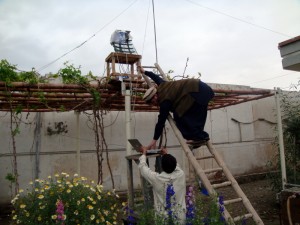
Because the end points are made for and by the users, access is completely based on individual will and merit. Meaning, you can have it if you do the work. So while the “usual suspects” continue to propose connecting hospitals, universities, and government buildings, with FabFi, regular people are connecting those places AND a small orphanage, an NGO, and a public school in a small village. And they’re doing it now.
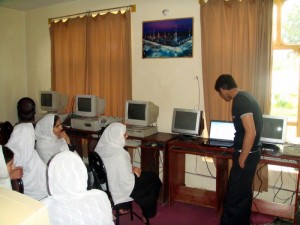
I can’t emphasize enough – the key to FabFi isn’t the technology, it’s the implementation where everything is developed specifically to allow regular people the ability to solve problems. If you don’t already know the tech term “viral“, look it up. This is the way these projects need to be done, you have to involve and employ absolutely everyone you can, especially the very population that you’re targeting. If it’s important to them, they’ll do it.
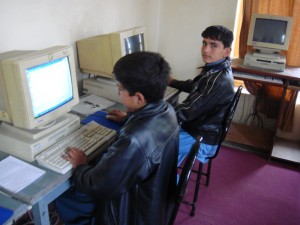
No caveats. Want to go to the moon? There’s only one way to get there and it’s not handouts or coddling from Vulcans. Otherwise you’re just a tourist along for the ride, and you still won’t be able to get there on your own. We’re there to guide and make available the collective knowledge and lessons learned of the developed world. Mentor, not suppress. Lead, not micromanage.
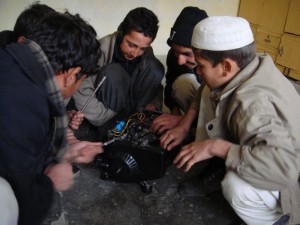
There does have to be leadership and focus. Open source projects fail if they are literally open loop frenzied parties of undirected work. FabFi is not a new idea within the Fabuniverse but you need someone to pull together resources, funding, and a timeline – and hold even volunteers to their word. To be effective, that leadership needs “street cred” – out there slugging through the heat and mosquitoes, or ice and snow, or late night geeking sessions with everyone else. I said leadership, not finance manager.
Because good leadership and mentoring begets good leadership and mentoring. South End Boston Fab Lab has a tremendously successful “Learn to Teach / Teach to Learn” program where grad students teach undergrads who teach high schoolers who teach middle schoolers. They don’t just teach rote skills or what to think, they are teaching young teens how to think. That program started with a handful of kids and has grown to hundreds, nearly a thousand confident young adults that any parent would be proud of.
And you know what’s just as wild? These labs lead and support each other. We’re just begininng to foster the relationships in Afghanistan – these kids are shy! – but the Pabal, India (7 years old) and Soshanguve, South Africa (3.5 years old) labs are reaching out to Afghanistan to share their projects and design files for the things they’ve developed over the past several years.
Their most valuable contributions to each other aren’t the machines or product – those change over time as needs and people change. It’s the collective mentoring in how to think, how to approach problems. It’s a slow process because it’s a journey for the user, not an answer to memorize.
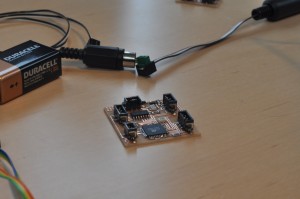
Here’s what’s next: it’s called the thinner client. Basically about $10 in parts, it’s the bare minimum of what you need to connect to the internet for things like email and access to Wikipedia and the like. Two way information stations with crazy low power consumption. A group of Pretoria, South African Fab Folk are heading up the implementation and distribution of these in South Africa, and both projects will trade around August with the South Africans learning and implementing FabFi and the Afghanis learning and implementing Thinner Client, with help from each other. And the whole rest of the world watching.
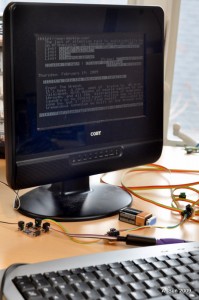
To keep the semantics simple, I’ll describe with the Jbad-appropriate words. Pashto native character map, plugs in to PAL or NTSC TV or any other display device you can find (just load in different software). Requires 3.3 VDC – 5VDC in pretty much any way you can get it to it (including through the comms, keyboard, etc.). In Jbad we’ll intentionally promote the text-only or vector-line-drawing-only versions so the units are acceptable for non-chaperone use (no effective net-nanny in Afghanistan!).
They connect to each other, they connect to FabFi. The connect wired or wireless, over RF, IR, and even acoustically. It’s all just different drop in electronic bits and different software modules, but it’s totally cut-and-paste. Don’t think they can do it? Watch young Valentina of the Ghana Fab Lab make and show you her circuit “Efe”, which means “it’s beautiful!” in Fanti.
She started by making something that was already designed, then she modified it, both the hardware and software. That’s the way “real engineers” learn stuff, start with something that works, understand it, modify it. And that’s basically the Fab Lab secret power.
Watch for this to explode – the combination of device and network is like, well, cell phones but without having to wait for the provider company to invest millions in the initial infrastructure. The learning curve is steep – it doesn’t help that the router kernel is in English – but once these things get translated in to local languages and processes, it’s going to go wild. The interest and requests are already overwhelming. People are bewildered when they ask who to ask to get an antenna to find that there is not an authority, they simply “must to do”. The biggest hurdle at the moment is people actually believing that is true!
It’s not just Afghanistan. The rate at which FabFi has spread is phenomenal. We released the FabFi 1.0 distribution in mid-March, essentially we got our act together and finally zipped all the files together with a little documentation and threw it up on our website. Not even a month later, I’ve heard from folks all over – from Soshanguve, South Africa to South Bronx, New York. The Heads On Fire Fab Lab in San Diego has endeavored to make antenna pairs to connect San Diego with Tijuanna, and I’ve even heard from the GATR folks who just want to connect to their work net from home.
Let me summarize: provide mission orders and appropriate funding. Trust the folks who know both the tech and understand how to engage the target population. Stand out of the way. Taking credit is optional.


